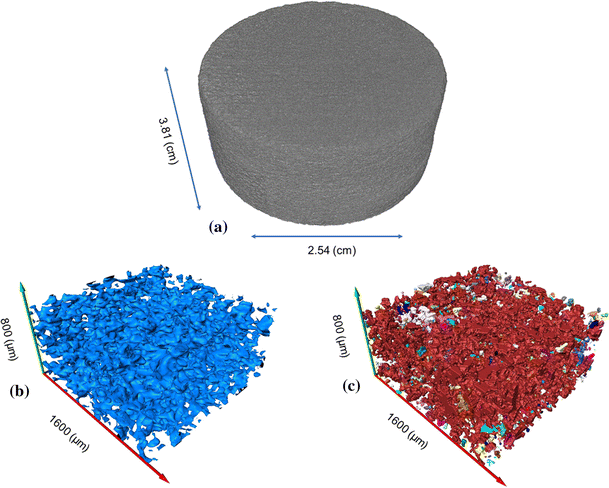Pore characterization of 3D-printed gypsum rocks: a comprehensive approach
With advancements in additive manufacturing, now 3D-printed core plugs can be duplicated in order to replace natural rock samples. This can help us to control their parameters to be used in different types of experiments for model verifications.

However, prior to such substitutions, we should ensure they can represent natural rock samples through characterizing their physical properties. In this paper, synthetic samples made up of gypsum powder are 3D-printed and then characterized for essential pores properties. The analysis included structures of the pores, quantitative porosity evaluation, pore size distribution, pore surface area, pore shape distribution, and corresponding anisotropy. Mercury injection porosimetry (MIP) and helium porosimetry (HP) combined with X-ray micro-computed tomography were performed to provide us with detailed information about the pores. Porosity was measured 32.66% from micro-CT based on watershed thresholding, which was found comparable with MIP and HP results, 27.90 and 28.86%, respectively. Most of the pores lay in the range from 4 to 10 μm in diameter with relative frequency of 92.04%. The pore shape distribution indicates that 3D-printed gypsum rocks host more spherical pores and fewer blade-shaped pores. In addition, pore anisotropy of the sample that was analyzed by collecting pore orientation in orthogonal axes represented the vertical transverse isotropy.